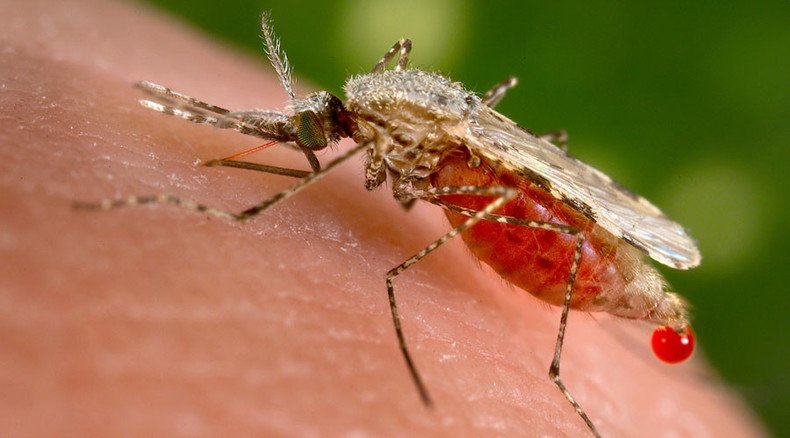Scientists modify mosquitoes to pass malaria-blocking genes in the wild

Scientists in California have deployed a gene editing technique to create a new strain of mosquitoes that can spread malaria-blocking genes across a wider population via procreation – and hopefully eliminate a disease that threatens 3.2 billion people worldwide.
Malaria is a life-threatening disease transmitted to people through the bites of infected female mosquitoes. It is an everyday reality to almost half of the world’s population. While different prevention methods exist for this curable malady, researchers want to eradicate the decease by lab engineering mosquitoes that cannot be infected with the malaria parasite.
The “gene editing technique” described in the scientific journal Proceedings of the National Academy of Science (PNAS), outlines a new model based on scientific research from University of California Irvine and University of California San Diego.
Through their combined efforts, scientists were successful in inserting a DNA element into the Anopheles stephensi mosquitoes' germ line, cells that pass on genes from generation to generation, to introduce malaria-blocking genes.
The gene editing technique used by the scientists is called CRISPR/Cas9 system and the study showed that DNA manipulation was inherited by 99.5 per cent of descendants over multiple generations.
“This opens up the real promise that this technique can be adapted for eliminating malaria,” said Anthony James, Distinguished Professor at UC Irvine.
To make this a reality, scientists hope to eventually release genetically modified insects into nature to mate with wild mosquitoes – despite warnings that modifying whole species may result in unpredictable ecological consequences.
“It can spread through a population with great efficiency, increasing from 1 percent to more than 99 percent in 10 generations, or about one season for mosquitoes,” University of California-San Diego biologist Valentino Gantz said.
“We do not propose that this strategy alone will eradicate malaria,” James said. However, alongside existing preventive methods such as drugs, future vaccines, and mosquito-blocking bed nets, the new gene pool could play a pivotal role in elimination of malaria.
Malaria is one of the world’s leading health problems, with the World Health Organization claiming that 97 countries have had ongoing malaria transmission in 2015. Up to 500 million cases of malaria occur each year, according to the Centers for Disease Control and Prevention, with nearly 1 million people perishing from the disease annually.
Sub-Saharan Africa faces the highest malaria threat, as this year it registered some 89 percent of overall malaria cases and 91 percent of malaria deaths. Insecticide-treated mosquito nets and indoor residual spraying are considered the most effective ways of preventing the contraction of the decease.












